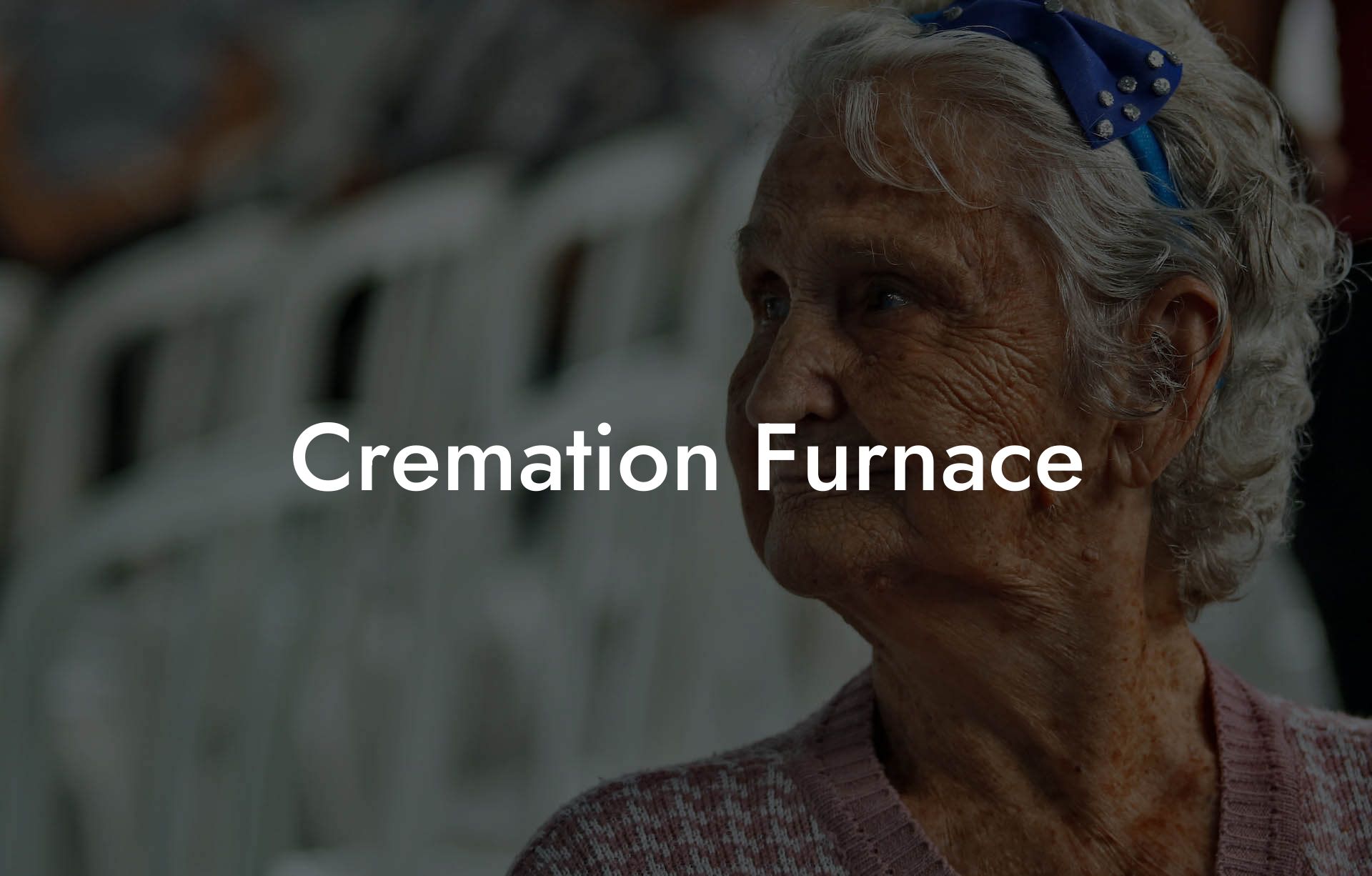Imagine a world where the final goodbye is not just a sorrowful farewell, but a celebration of life, love, and legacy. Welcome to the realm of cremation, where the art of saying goodbye meets the science of cremation furnaces.
We know how hard that can feel. You are sorting through precious memories, searching for the right words, and trying to hold it together when it is time to speak. It is a lot to carry.
That is why we created a simple step by step eulogy writing guide. It gently walks you through what to include, how to shape your thoughts, and how to feel more prepared when the moment comes. → Find Out More
Quick Links to Useful Sections
What is a Cremation Furnace?
A cremation furnace, also known as a cremator or retort, is a specialized device designed to reduce human remains to their basic elements through high-temperature combustion. This process, called cremation, has been a part of human culture for thousands of years, with modern cremation furnaces ensuring a dignified, efficient, and environmentally friendly way to bid farewell to loved ones.
These furnaces are typically large, industrial-sized units that operate at extremely high temperatures, often exceeding 1800°F (980°C). The intense heat breaks down the body, leaving behind a residue of bone fragments and ash, which are then processed into the final cremated remains.
The Science Behind Cremation Furnaces
The cremation process is a complex blend of chemistry, physics, and engineering. Here's a simplified breakdown of how cremation furnaces work:
- Ignition: The cremation process begins with the ignition of the furnace, typically using natural gas or propane.
- Pre-heating: The furnace is pre-heated to a high temperature, usually around 1400°F (760°C), to ensure a consistent and efficient cremation process.
- Cremation: The body is placed in a cremation container and inserted into the furnace. The high temperature breaks down the body, releasing gases and vapors that are filtered and cleaned before being released into the atmosphere.
- Cooling and processing: Once the cremation process is complete, the remains are cooled, and the bone fragments are processed into a fine powder, known as cremated remains or ashes.
Types of Cremation Furnaces
There are several types of cremation furnaces, each designed to meet specific needs and regulations:
- Traditional cremation furnaces: These are the most common type, using a direct flame to cremate the body.
- Alkaline hydrolysis cremation furnaces: Also known as water cremation or resomation, this process uses a high-temperature alkaline solution to break down the body.
- Flameless cremation furnaces: These furnaces use a combination of heat and oxygen to cremate the body, without an open flame.
The Environmental Impact of Cremation Furnaces
Cremation furnaces have faced criticism for their environmental impact, particularly regarding air pollution and energy consumption. However, modern cremation furnaces are designed to minimize their ecological footprint:
- Emissions control: Advanced filtration systems and emissions control technologies reduce the release of pollutants into the atmosphere.
- Energy efficiency: Modern cremation furnaces are designed to optimize energy consumption, reducing their carbon footprint.
- Sustainable practices: Many crematories and funeral homes are adopting sustainable practices, such as recycling metals and using eco-friendly containers.
The Future of Cremation Furnaces
As the world continues to evolve, cremation furnaces are adapting to meet the changing needs of society:
- Alternative fuels: Research into alternative fuels, such as biofuels and hydrogen, is ongoing to reduce the environmental impact of cremation furnaces.
- Increased efficiency: Advances in technology are driving the development of more efficient cremation furnaces, reducing energy consumption and emissions.
- Sustainable cremation options: The industry is shifting towards more eco-friendly cremation options, such as alkaline hydrolysis and flameless cremation.
Frequently Asked Questions About Cremation Furnaces
Here are some frequently asked questions about cremation furnaces:
1. How long does the cremation process take?
The cremation process typically takes around 2-3 hours, depending on the type of furnace and the individual's body composition.
2. What happens to the ashes after cremation?
The ashes are processed into a fine powder and returned to the family, who can then choose to bury, scatter, or keep them in an urn.
3. Are cremation furnaces safe?
Modern cremation furnaces are designed with safety in mind, featuring advanced temperature control systems and emissions monitoring to ensure a safe and dignified process.
4. Can I witness the cremation process?
Some crematories offer witness cremation, where family members can observe the cremation process from a safe distance.
Resources and Community Support: Your Next Steps
As you navigate the world of cremation furnaces, remember that you're not alone. Here are some resources to help you on your journey:
- Cremation associations: Organizations like the International Association of Cremationists and the Cremation Association of North America provide valuable resources and guidance.
- Funeral homes and crematories: Reach out to local funeral homes and crematories for information on their cremation services and facilities.
- Online forums and support groups: Join online communities and forums to connect with others who have experienced loss and are exploring cremation options.

